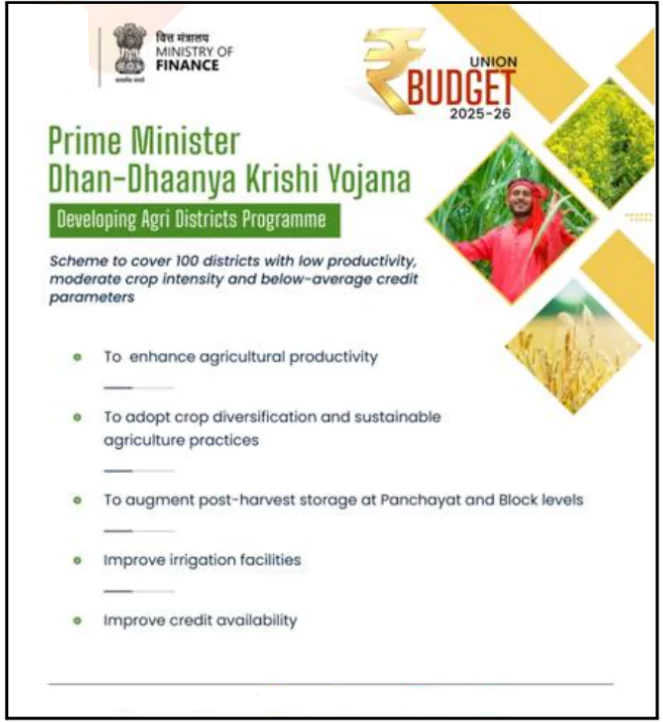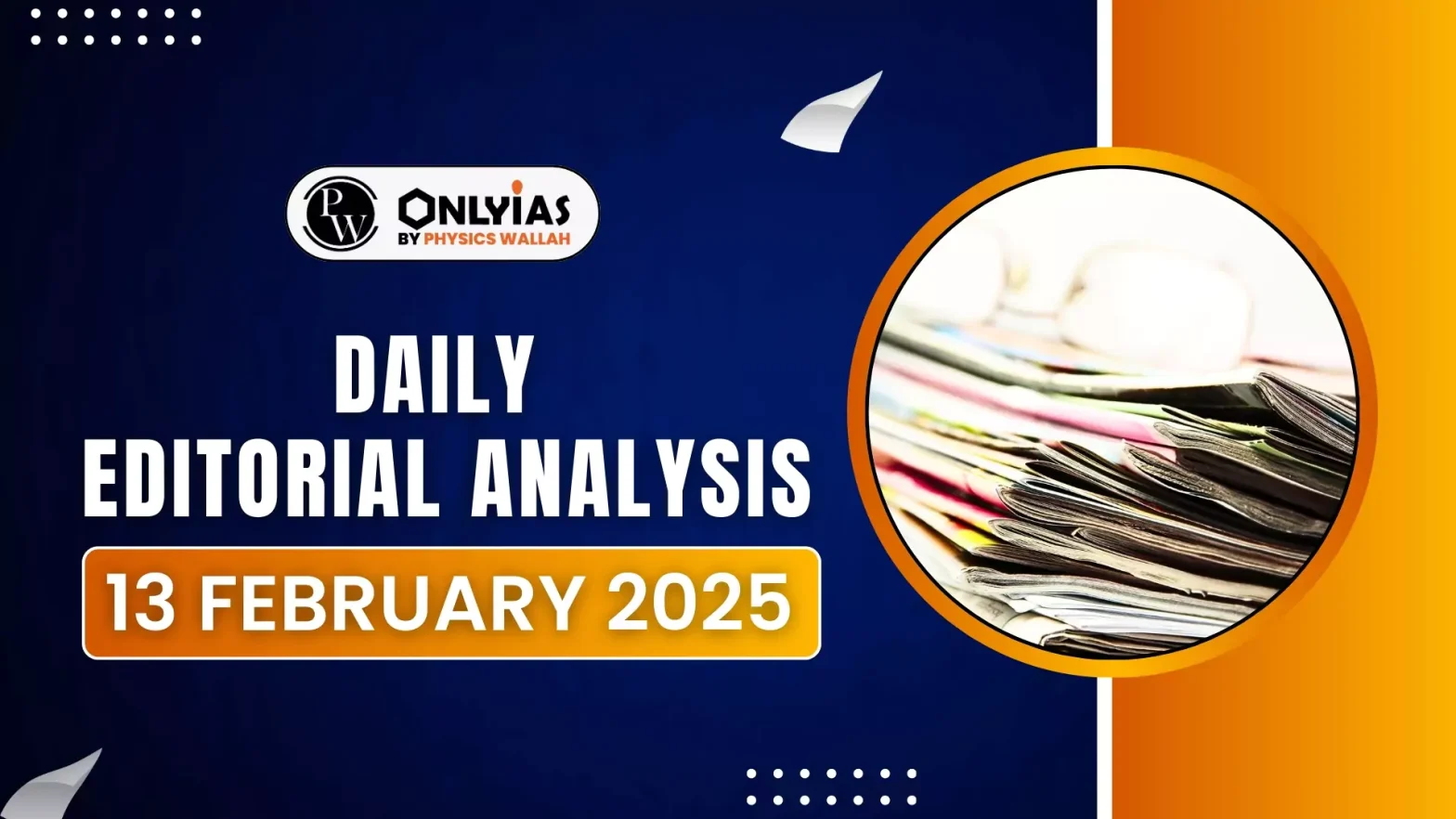The Union Budget 2025-26 reaffirms the government’s commitment to inclusive development, with a focus on the well-being of four key population groups: the poor, youth, farmers, and women.
| A gender-responsive budget is one that benefits everyone—women, men, girls, and boys—by not only ensuring an equitable distribution of resources and promoting equal opportunities for all, but by focusing on challenges to tackle systemic inequalities and addressing the specific needs and barriers faced by different genders.
Example: Simply allocating a budget for education is not enough, especially in areas where girls’ education is not supported. In such cases, the government can allocate funds for initiatives like providing bicycles for girls, enabling better access to education. |
Increased Allocation for Gender Budget
- A major highlight of the Union Budget 2025-26 is the increase in the gender budget allocation to 8.8% of the total Budget, a significant jump from the previous year’s 6.8%.
- This is the highest allocation in two decades, amounting to ₹4.49 lakh crore spread across 49 Union Ministries and departments.
- In addition, 12 new central Ministries — including those from sectors such as railways, ports, shipping, land resources, and food processing — have integrated gender budgets, signaling a whole-of-government approach to gender mainstreaming.
- This also showcases that gender budgeting is not only the domain of the Ministry of Women and Child Development. All ministries and departments must work together to ensure that gender considerations are integrated across all sectors.
Rising Female Labour Force Participation
- Indian Women Workforce: India’s female labour force participation rate (FLFPR) has steadily increased, reaching approximately 42% in 2023-24, up from 33% in 2021-22, as reported in the Periodic Labour Force Survey.
- Global Average: This is closing the gap with the global average of 47%, as per the International Labour Organisation. However, there remains a substantial 37-percentage point gap compared to men’s participation rate of 79%.
- Schemes Aligning with Viksit Bharat at 2047: Achieving the ambitious target of 70% women’s participation in economic activities by 2047 requires significant investment in skilling, employment, entrepreneurship, and social security. The Budget has acknowledged this need through various schemes designed to empower women, including:
- Skill India Programme
- Entrepreneurship and Skill Development Programme (ESDP)
- National Skill Training Institutes
- Deendayal Antyodaya Yojana-National Rural Livelihoods Mission (DAY-NRLM)
- Mahatma Gandhi National Rural Employment Guarantee Scheme (MGNREGS)
- PM Employment Generation Programme
- PM Vishwakarma
- Krishonnati Yojana
- Combined Allocation: These initiatives have received a combined increased allocation, from ₹1.19 lakh crore to ₹1.24 lakh crore this year, with 52% of the funds specifically directed toward women and girls.
- New Schemes: New schemes like the Prime Minister Dhan-Dhaanya Krishi Yojana, first-time entrepreneurs’ scheme, sustainable livelihood for urban workers initiative, and Centres of Excellence for Make in India will also contribute to boosting women’s workforce participation.

Formalising Gig Workers and Improving Social Security
- Women in Informal Sector: A critical issue for women in India is the predominance of informal work, with 90% of working women engaged in this sector.
- e-Shram Portal: The Budget’s proposal to formalise gig workers by issuing identity cards and registering them on the e-Shram portal is a step toward empowering these women.
- Benefits: This initiative will provide formal recognition, access to social security entitlements, and financial inclusion benefits.
| E-Shram Portal
e-Shram is a comprehensive National Database of Unorganised Workers (NDUW) launched by the Government of India under the Ministry of Labour & Employment.
eShram portal is meant to register and support the unorganized workers by providing them a Universal Account Number (UAN) and eShram cards.
Its primary purpose is to facilitate delivery of welfare benefits and social security measures to unorganized sector workers across the country. |
Harnessing Artificial Intelligence (AI) for Women’s Empowerment
- Gender Budget Under AI Mission: The establishment of a Centre of Excellence on Artificial Intelligence (AI) for the education sector and a ₹600 crore gender budget under the India AI Mission demonstrate the government’s commitment to leveraging technology for social good.
- Benefits: With technological advancements reshaping the future of work, investing in digital education, skills, and enterprise training for women is crucial to ensuring equitable participation in the workforce and maximizing economic benefits for all.
Supporting Women in Agriculture and Entrepreneurship
- Diverse Roles Women Play: Financial institutions must acknowledge the diverse economic roles women play, particularly in agriculture and entrepreneurship.
- Encouraging Women-Owned Enterprises: As per the Udyam portal, 20.5% of micro, small, and medium enterprises (MSMEs) are women-owned, employing around 27 million people.
- Women Owners Creating More Opportunities: According to Bain and Company and Google, establishing an additional 30 million women-owned businesses could create 150-170 million jobs, accounting for over 25% of the job creation needed for India’s working-age population by 2030.
Way Forward
- For Farmers: Simplifying documentation requirements for financial schemes, such as delinking Kisan Credit Cards from land ownership, will help women farmers access loans and credit. This will enable them to improve crop yields, productivity, and expand their agricultural operations.
- For Business Owners: Unlocking finance for these women-owned enterprises through collateral-free loans, alternative credit scoring models, and financial literacy programs can significantly boost economic growth.
- Maintaining Data: Tracking access and usage of these schemes through gender-disaggregated data will further enhance their effectiveness, ensuring that women benefit from financial and social security provisions.
Conclusion
By continuing to prioritize gender-responsive budgeting, strengthening social protection, and fostering an inclusive labor market, India can empower women to become key drivers of national growth. Achieving the target of 70% women’s participation in economic activities by 2047 is an achievable goal that will contribute significantly to the nation’s progress.
![]() 13 Feb 2025
13 Feb 2025


